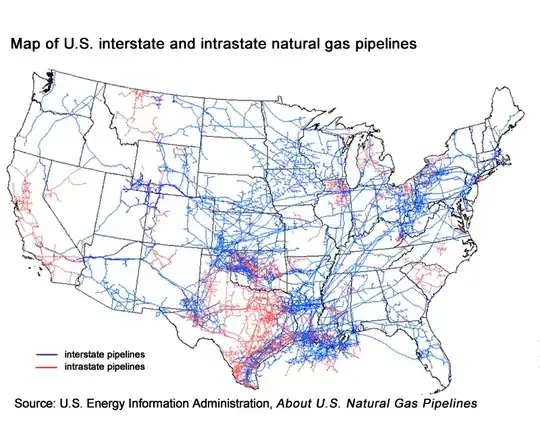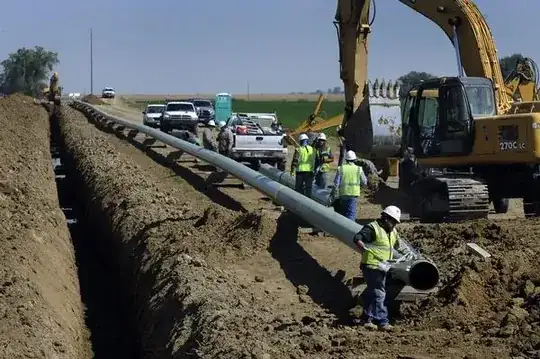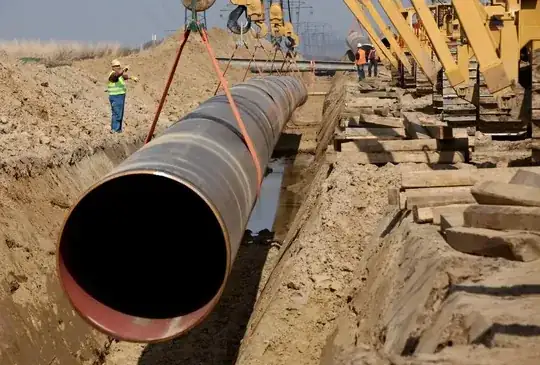Many misinformed Answers here
People should actually read the references they have quoted.
Not an answer, just a point of view from a Natural Gas / Petroleum Engineer
The answers about pipelines will still be used for 'biofuels', 'biogas', 'landfill gas', 'Hydrogern' storing CO2 etc are very misinformed. Those Wikipedia pages are misinformed as well, they are 'theoretically true' The truth is, compressing is expensive.
These pipelines have utility for Natural Gas since NG is extracted from deep, high pressure high temperature wells (HPHT wells), a natural high pressure is provided by the reservoir, which let's us humans to use/transport the gas at a reasonable cost. The cost of compressing increases exponentially as the difference between input and output pressure rises, compressors increase the pressure from 10-20bar (natural) to 30-100bar for long distance transmission only. These gaseous mixtures do not have the natural pressure that NG has, an oil company could compress a gas from 15bar to 30bar; for lower initial pressure than that, the owner would rather burn it (flaring), than find a use for it. In Fact, any gas is useless for commercial applications if it has no pressure. To think these pipelines can be used for used biofuels is naive, it's like traveling on an Autobahn with a bicycle. Answers here are talking about compressing any gas like it's free.
As someone who has been around pipelines and gases all my life, I would say the accepted answer is plausible.

This is from one of those studies that answerers here just saw the title of, read the conclusion.

EDIT
There is a lot of discussion on using alternate energy careers and fuels in these pipelines, ignoring the thermodynamics and mechanics of such operations. Hence, I am posting a few sentences from my favorite undergrad book (Mccabe-Smith-Harriot 5th Ed, Page 204) to make a few things clear about why these pipelines, are natural gas pipelines.
*The theoretical head developed by a centrifugal pump (context: any pressure head increasing device), depends on the impeller speed, the
radius of impeller and the velocity of the fluid leaving the impeller.
If these factors are constant, the developed head is same for fluids
of all densities and is same for liquids and gases. The increase in
pressure, however, is the product of the developed head and the fluid
density. If a pump develops a head of 100 ft and is full of water,
the increase in pressure is 100*62.3/144 = 2.9 atm. If the the pump is
full of air at ordinary density the pressure increase is about
0.007atm.*
Natural gas is at a high pressure naturally, rising up due to its own pressure from thousands of feet under the earth. It also has a higher density due to high pressure (see here). Hence, the pressure difference created by a compressor on such an input is large. Once you lose pressure of Natural Gas, it is effectively wasted (because the cost of compressing is high), hence flared (unless the volume is very large).
So when the answers above discuss biogas, landfill gas, biofuels, hydrogen, CO2 to use in these magnificently long and large diameter pipelines; it's naive, because there are no known high pressure, significant volume sources of these gases. And unfortunately, it also exhibits an ignorance of the properties of these alternate fuels that are being promoted. These fuels are compressed to burn, and not transport at the scale at which a country requires. Compressed air is used in many industrial operations, but not as a primary energy carrier. You don't want to put in more energy, than you get to use later.
Using these pipelines for such purposes is not the way forward. These gases may be mixed with natural gas for transport, but that is also silly; because you manufactured the gas after investing in separation processes, and then you mix it back with another gas to transport. Plus, the question implies scenarios when we run out of natural gas.
On a side note, I do not think the Earth running out of natural gas anytime soon.
These are actual pressures in pipelines. In a gas distribution network, notice entry point is high, Those are big pipelines where most of the pipeline money went. The city is just the delivery point, a tiny part of the network.






